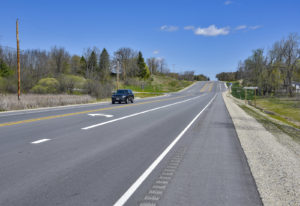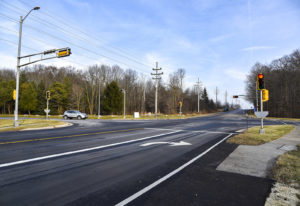
Many factors are considered when determining which roadway alternative is appropriate for your project.
Benefit Cost Analysis (BCA) is a valuable tool that is becoming increasingly important to state and local governments to understand if a roadway improvement is economical and as a tool in comparing multiple improvement alternatives. In order to conduct the BCA, two scenarios must be compared such as a proposed and an existing roadway design. This article highlights how to incorporate safety benefits into a BCA.
BCA includes benefit cost ratios (BC ratios), which are determined by dividing total benefits by total costs. There are many benefits and costs that can be considered. Typical benefits incorporated in a BCA may include safety, travel time, reliability, vehicle operating costs, and emissions. Typical costs may include construction, real estate, maintenance and operation, rehabilitation, and mitigation. The benefit and cost factors selected for inclusion in the BC ratio are based on the level of detail desired in the BCA.
Predictive Safety Model proves effective
raSmith completed several recent projects where safety was the driving factor in the alternatives comparison and corresponding BCA. The safety benefits were calculated using predictive safety analyses based on the Highway Safety Manual (HSM) methodology and the Interactive Highway Safety Design Model (IHSDM) software. The predictive safety methodology allows us to predict the number of crashes by severity that would occur in the future on an existing roadway or a proposed roadway design alternative. The predictive safety model considers roadway geometrics such as shoulder width, lane width and barrier, and the average daily vehicular traffic volumes on the roadway.

Benefit Cost Analysis effectively evaluates the safety benefits of roadway improvement alternatives.
The HSM methodology provides monetary values for each crash severity—fatality, three levels of injury, or property damage only. The monetary values are applied to each crash type, and a socioeconomic value for the predicted crashes during the study period is determined using economic analysis. The safety benefit is calculated by subtracting the total monetary value of the proposed alternative crashes from the existing condition crashes. If the proposed alternative resulted in increased crashes or more severe crashes as compared to the existing conditions, the safety benefit would be negative for the alternative.
The BC ratio is determined by dividing all of the benefits by all of the costs. If the BC ratio is greater than 1.0, the alternative has a higher benefit than the cost, and it is considered economical as compared to the base condition. This is just one tool to aid in alternative selection. It’s important to remember that many factors are considered when determining which roadway alternative is appropriate for your project.
Contact raSmith for project assistance
For more information about how Benefit Cost Analysis may be of value to you, please contact Laura Schroeder, P.E., PTOE, RSP, project engineer, at laura.schroeder@rasmith.com or (262) 317-3271.
